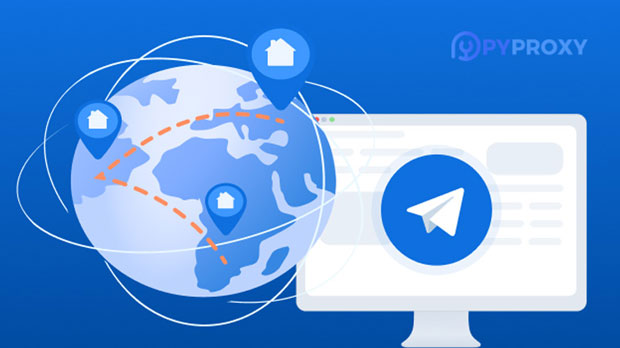In today’s digital age, having a smooth and uninterrupted internet experience is more important than ever. Whether you’re streaming videos, browsing websites, or engaging in online gaming, a reliable and fast internet connection is crucial. However, many users face slow speeds, restricted access, and security concerns while surfing the web. This is where a high-speed socks5 proxy can come to the rescue. By routing your internet traffic through a proxy server, SOCKS5 offers not only enhanced speed but also anonymity and better access to restricted content. In this article, we will explore how a high-speed SOCKS5 proxy can improve your online experience, its advantages, and how it works. What is a SOCKS5 Proxy?Before diving into the benefits, it’s important to understand what a SOCKS5 proxy is and how it differs from other types of proxies. SOCKS stands for “Socket Secure,” and the version 5, or SOCKS5, is the most advanced iteration of this protocol. Unlike HTTP or HTTPS proxies, which only work with specific types of traffic (mainly web browsers), SOCKS5 is more versatile. It can handle any type of internet traffic, including email, video streaming, and file transfers, making it a robust solution for various online activities.The SOCKS5 protocol works by acting as an intermediary between your device and the internet. When you send a request to access a website or service, it is routed through the socks5 proxy server. The proxy server then forwards your request to the destination, making it appear as though the request is coming from the proxy server’s IP address rather than your own. This process adds a layer of anonymity and can also enhance speed and performance.Why Choose High-Speed SOCKS5 for Better Online Experience?For those who desire an optimal browsing experience, a high-speed SOCKS5 proxy offers several compelling advantages over traditional proxies or VPNs. Here are some of the main reasons why you should consider using a high-speed SOCKS5 proxy:1. Enhanced Speed and PerformanceThe most noticeable benefit of using a high-speed SOCKS5 proxy is the improvement in internet speed. Many users experience slow browsing, buffering, or lagging when accessing websites or streaming content online. This issue can arise due to network congestion, geographical distance from the server, or ISP throttling.A high-speed SOCKS5 proxy can help bypass these issues by optimizing your internet traffic. By routing your requests through a faster, less congested proxy server, you can enjoy smoother browsing, faster downloads, and reduced buffering during streaming. Additionally, because SOCKS5 supports multiple types of traffic, you won’t experience slowdowns while using other applications, such as email or FTP.2. Access to Geographically Restricted ContentAnother significant advantage of using a SOCKS5 proxy is the ability to access geographically restricted or censored content. Many online services, including streaming platforms and websites, impose regional restrictions that prevent users from certain locations from accessing their content. This can be frustrating if you are traveling abroad or if certain content is not available in your country.A high-speed SOCKS5 proxy allows you to bypass these geographic restrictions. By connecting to a proxy server located in a region where the content is accessible, you can effectively make it appear as though you are browsing from that location. This opens up a wealth of previously restricted content, from movies and TV shows to websites and apps that may be blocked in your region.3. Improved Anonymity and PrivacyIn an era of increasing online surveillance and data breaches, privacy has become a major concern for internet users. Many websites and services track your online activities through cookies, IP addresses, and other tracking methods. This can lead to an invasion of privacy and unwanted targeted advertising. socks5 proxies provide a higher level of anonymity compared to regular proxies. When you use a SOCKS5 proxy, your real IP address is hidden, and your traffic is routed through the proxy server. This makes it much harder for third parties to trace your online activity back to you. While a SOCKS5 proxy doesn’t encrypt your traffic like a VPN, it does offer a good level of privacy for users who don’t need full encryption but still want to maintain anonymity.4. Versatility and FlexibilityOne of the standout features of SOCKS5 proxies is their versatility. Unlike HTTP or HTTPS proxies that are limited to specific types of web traffic, SOCKS5 can handle a wide range of protocols. This means that it can be used for virtually any online activity, including browsing, streaming, gaming, file sharing, and more.The flexibility of SOCKS5 makes it an attractive option for users who need a comprehensive solution for various online tasks. Whether you are trying to access content on a specific website, engage in online gaming, or use peer-to-peer applications, a high-speed SOCKS5 proxy can accommodate all these activities with ease.5. Bypassing Internet Throttling and CensorshipAnother advantage of using a high-speed SOCKS5 proxy is the ability to bypass internet throttling and censorship. Many internet service providers (ISPs) engage in bandwidth throttling, which means they intentionally slow down your internet speed based on the type of traffic you are using. For example, streaming video content or gaming may result in slower speeds due to ISP throttling.By using a SOCKS5 proxy, you can bypass these throttling measures. Since your ISP will only see traffic directed to the proxy server rather than the actual content you're accessing, they cannot apply throttling based on traffic type. This results in faster speeds and a more reliable internet connection for streaming, gaming, and other bandwidth-heavy activities.How Does a High-Speed SOCKS5 Proxy Work?The working of a SOCKS5 proxy is quite straightforward. When you configure a SOCKS5 proxy on your device, you essentially tell your applications to route all internet traffic through the proxy server. Here’s a step-by-step breakdown of the process:1. Request Routing: When you access a website or service, your device sends a request to the SOCKS5 proxy server instead of going directly to the website’s server.2. Forwarding the Request: The SOCKS5 proxy server forwards the request to the destination server (the website or service you are trying to access).3. Response Handling: Once the destination server responds, the SOCKS5 proxy server receives the response and forwards it back to your device.4. IP Masking: During this process, your device’s IP address is hidden, and the proxy server’s IP address is shown instead. This adds a layer of anonymity.Considerations When Using a High-Speed SOCKS5 ProxyWhile a high-speed SOCKS5 proxy offers numerous benefits, there are some considerations to keep in mind before using it:- No Encryption: Unlike VPNs, SOCKS5 proxies do not encrypt your traffic. While they can help you mask your IP address and bypass restrictions, they do not provide the same level of security. If encryption is a priority, consider using a VPN in addition to a SOCKS5 proxy.- Compatibility: Some applications or websites may not support SOCKS5 proxies. Make sure that your preferred apps or services can work with this protocol before configuring it.- Legal Concerns: Always ensure that you are using SOCKS5 proxies in a legal manner. Using proxies to bypass content restrictions or engage in illegal activities can result in consequences.ConclusionA high-speed SOCKS5 proxy is a powerful tool for anyone looking to enhance their internet experience. Whether you want faster speeds, greater anonymity, or access to geo-restricted content, a SOCKS5 proxy offers a versatile and reliable solution. However, like any online tool, it’s important to use it responsibly and understand its limitations. With the right setup, a high-speed SOCKS5 proxy can significantly improve your online activities, making browsing, streaming, and gaming smoother and more enjoyable.
Jan 10, 2025
![arrow]()



















































